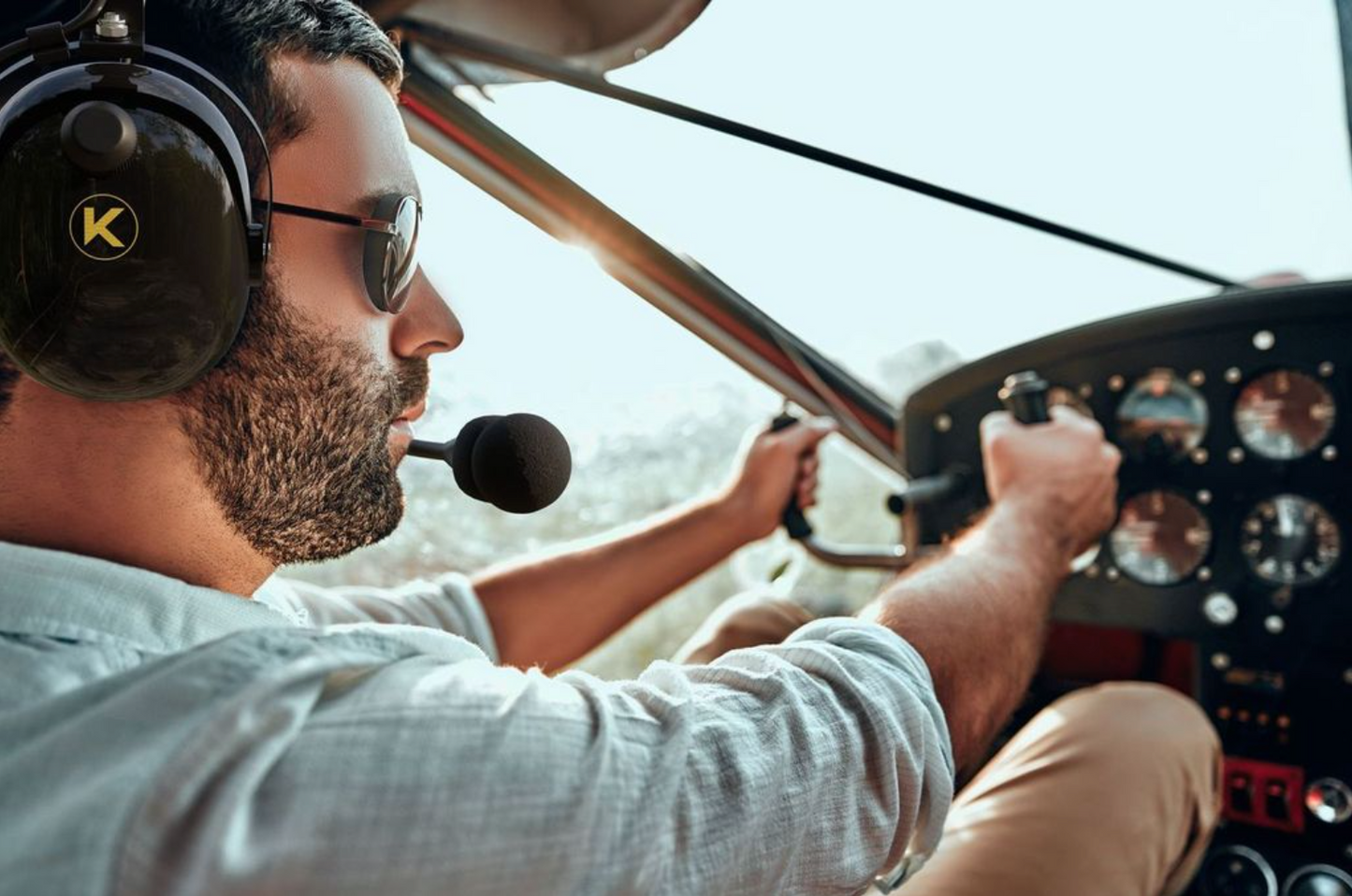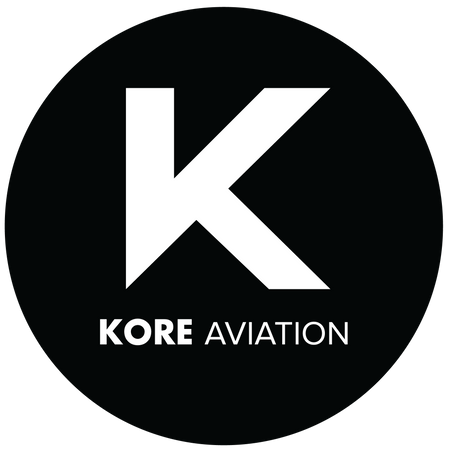
Kore Aviation - Training to become a pilot means you will spend many hours in the cockpit. That is why choosing the best headset for student pilot is one of the smartest investments you can make early. A good headset helps with communication clarity, reduces fatigue, and improves safety.
In this guide we will explore what features define the best headset for student pilot, how the Kore Aviation KA‑1 measures up, tips for using it properly, and how to choose what fits your training style.
What Features Matter in the Best Headset for Student Pilot
When selecting the best headset for student pilot role you want several key features:
- Strong noise reduction so you can hear air traffic control clearly over engine noise
- Comfortable ear seals and headband for long flights
- Microphone clarity and stability for accurate communication
- Balanced weight and fit so it does not strain your head or ears
- Versatile audio input options or switches for compatibility with different aircraft setups
These features matter because students train many hours and need gear that supports their learning rather than distracts.
How the Kore Aviation KA‑1 Delivers What Students Need
The Kore Aviation KA‑1 headset is designed especially with students in mind. Based on the KA‑1 product page, these are its strong points:
- The KA‑1 has a Noise Reduction Rating (NRR) of 24 dB which cuts background cockpit and engine noise significantly.
- Comfort features include ultra‑soft silicone gel ear seals and an extra‑thick head pad with adjustable headband to fit different head sizes.
- The microphone is electret noise‑canceling with a pre‑amplifier, mounted on a flexible 360 degree boom so you can position it well even while moving.
- It has dual volume controls (one for each ear) so you can adjust audio balance especially if one ear hears better than the other.
- Mono/stereo switch in the cable helps adapt to aircraft audio systems that may be mono or stereo.
- Additional features like a 3.5 mm auxiliary input let you connect mobile devices or tablets for navigation audio or training apps.
- Backed by a 5‑year warranty and built with durable materials so it holds up through frequent student pilot use.
Comparing Kore Aviation KA‑1 to Other Student Pilot Headsets
| Headset Model | Noise Reduction (dB) | Comfort Features | Price Range* |
|---|---|---|---|
| Kore Aviation KA‑1 | 24 dB | Gel ear seals, thick head pad, dual volume | Mid price plane‑training range |
| Other basic tied foam seals models | ~20‑22 dB | Foam pads, lighter build, fewer features | Lower cost but less comfort |
| Premium active noise cancelling models | >30 dB | Additional battery or power needs | Much higher cost |
*Prices and features vary by brand and availability.
From many reviews, the Kore Aviation KA‑1 is frequently praised for giving near premium comfort at a price affordable to student pilots.
Tips to Get the Most from Your Headset as Student Pilot
- Adjust the headband till the tension is just right so it stays secure yet not too tight.
- Position the microphone boom so it is about one finger’s width from your mouth for clear voice pickup.
- Use the dual volume knobs to balance audio between ears especially in noisy run ups or during taxi.
- Keep the ear seals clean and replace them if they wear out so noise reduction remains effective.
- Use the auxiliary input when possible for navigation prompts or training app feedback so you can hear both aircraft comms and app alerts.
These small habits help your headset feel better and perform better throughout your training.
Also read: Buyer and Preflight Guide How to Test a Pilot Headset
Internal Insights and Pilot Reviews
On the Kore Aviation blog pilots talk about how the KA‑1 helped them focus during solo cross‑country flights and during repetitive training circuits. They note that clarity and comfort allowed them to spend more hours flying without fatigue.
Student pilots often say that saving on gear without saving on quality lets them invest more in flight hours. The KA‑1 gives that value.
How to Choose and Test Before Buying
Before buying any headset consider doing this checklist to ensure you get the best headset for student pilot training:
- Try it on in person if possible. Check how it feels after 10‑15 minutes.
- Test microphone in a noisy environment. Can people hearing your voice clearly under engine noise?
- Check whether dual‑plug connectors match your trainer aircraft.
- See whether you can adjust each ear volume separately.
- Find out what replacement parts like ear seal pads cost.
Kore Aviation has a guide on how to choose and test an aviation headset which many student pilots find very helpful.
Common Mistakes Student Pilots Make with Headsets
- Picking lowest price without checking sound clarity or noise reduction
- Assuming active noise reduction is always better for beginner training
- Overlooking weight and comfort, leading to fatigue
- Not considering durability or warranty, resulting in replacement sooner
Avoiding these helps you choose what is truly the best headset for student pilot.
External Expert Opinion
Skiesmag reviewed the KA‑1 as a solid choice for student pilots who want premium feel but without premium price. They say it delivers comfort, clarity and a good feature set for flight training.
Another student pilot gear comparison highlights KA‑1’s noise reduction at 24 dB, gel ear seals, and its value in long training flights as reasons it often makes “best list” for student pilot headsets. Best Electronic Hub
FAQs: Best Headset for Student Pilot
-
What is noise reduction rating?
Noise Reduction Rating (NRR) measures how much ambient noise is reduced. A rating of 24 dB like KA‑1 means that loud engine noise is lowered significantly so communications become clearer. -
Do students need active noise cancelling?
Not always. Passive noise reduction as KA‑1 offers often suffices. Active noise cancelling adds cost, weight and sometimes power needs. -
Is stereo sound important?
Stereo lets you receive audio in both ears independently. It is nice for awareness and comfort. KA‑1 includes a mono/stereo switch for flexibility. -
Can I use KA‑1 headset with training apps?
Yes. The 3.5 mm auxiliary input lets you connect devices like tablets or phones for navigation alerts or audio resources. -
Will headset comfort reduce fatigue?
Absolutely. Soft seals, good padding, adjustable headbands reduce pressure and ear discomfort especially on long or frequent flights. Student pilots benefit a lot. -
How long will Kore Aviation KA‑1 last?
With good care, it lasts many flight hours. The 5‑year warranty also supports long term use. Many users report durability under flight school use.
Final Thoughts
Choosing the best headset for student pilot means balancing sound clarity comfort durability and cost. The Kore Aviation KA‑1 offers all these at a level that supports learning rather than draining budget.
🎧 If you are training now or planning to start, check out the KA‑1 headset from Kore Aviation. It delivers features many student pilots value without breaking the bank.


